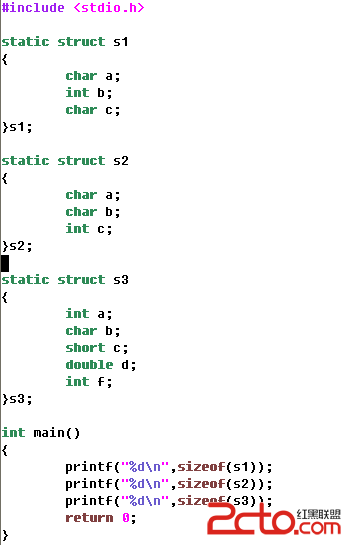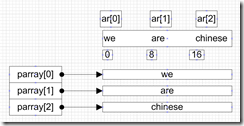poj 3764 The xor-longest Path 字典树 + Xor
这题意思很简单。求一棵树里面的一条路径,使得其异或权(就是将路径里面所有边的权值异
或起来)最大。
这个题有两步。第一步是假定根为节点0,求出根到其它节点的异或距离,保存在数组xor里面,
这个dfs一下即可。然后,用xor[i]^xor[j]就能代表节点i到节点j的路径。这个结论可以这么看。
如果,i和j之间的路径经过根节点,那么上面的结论肯定是正确的。如果,该路径不经过根,那么
xor[i]和xor[j]必定保护从根到某个节点的相同的一段子路径,根据异或的性质,这段子路径会
被消掉,所以这个结论也是这确的。。。
第二步就是枚举,xor[i]^xor[j]使得结果最大了。如果直接暴力,平方的算法肯定会超时的。
由于每个值可以表示成2进制,如果把其它xor值都保存在字典树里面,用当前的xor[i]去字典树
里面,一遍就可以找到异或最大值。
另外,由于树的点数太多,只能用邻接表,用vector模拟邻接表果断超时了。。。
改成静态链表才过。。。
代码如下:
#include <stdio.h>
#include <string.h>
#include <algorithm>
#include <vector>
using namespace std;
const int MAX = 100010;
int nXor[MAX];
bool bVis[MAX];
int nFirst[MAX];
struct Edge
{
int nE;
int nW;
int nNext;
};
Edge egs[MAX * 2];
struct Node
{
Node* pSons[2];
};
Node nodes[MAX * 32];
Node* pRoot = &nodes[0];
int nNew;
void GetBCode(int nL, int* nBCode, int& nLen)
{
nLen = 0;
while (nLen <= 30)
{
nBCode[nLen++] = nL % 2;
nL >>= 1;
}
reverse(nBCode, nBCode + nLen);
}
void Insert(int nL)
{
int nLen = 0;
int i = 0;
int nBCode[32];
GetBCode(nL, nBCode, nLen);
Node* pNode = pRoot;
while (i < nLen)
{
if (pNode->pSons[nBCode[i]])
{
pNode = pNode->pSons[nBCode[i]];
}
else
{
memset(nodes + nNew, 0, sizeof(nodes[nNew]));
pNode->pSons[nBCode[i]] = nodes + nNew;
pNode = nodes + nNew;
++nNew;
}
++i;
}
}
int FindMax(int nL)
{
int nLen = 0;
int nAns = 0;
int i = 0;
int nBCode[32];
Node* pNode = pRoot;
GetBCode(nL, nBCode, nLen);
while (i < nLen)
{
int nBest = (nBCode[i] == 0 ? 1 : 0);
int nBad = (nBCode[i] == 0 ? 0 : 1);
if (pNode->pSons[nBest])
{
nAns = 2 * nAns + nBest;
pNode = pNode->pSons[nBest];
}
else if (pNode->pSons[nBad])
{
nAns = 2 * nAns + nBad;
pNode = pNode->pSons[nBad];
}
else break;
++i;
}
return nAns ^ nL;
}
void Dfs(int nV, int nL)
{
nXor[nV] = nL;
bVis[nV] = true;
for (int e = nFirst[nV]; e != -1; e = egs[e].nNext)
{
if (!bVis[egs[e].nE])
{
Dfs(egs[e].nE, nL ^ egs[e].nW);
}
}
}
int main()
{
int nN;
int nU, nV, nW;
while (scanf("%d", &nN) == 1)
{
for (int i = 0; i < nN; ++i) nFirst[i] = -1;
for (int i = 1, j = 0; i < nN; ++i)
{
scanf("%d%d%d", &nU, &nV, &nW);
egs[j].nE = nV;
egs[j].nW = nW;
egs[j].nNext = nFirst[nU];
nFirst[nU] = j++;
egs[j].nE = nU;
egs[j].nW = nW;
egs[j].nNext = nFirst[nV];
nFirst[nV] = j++;
}
memset(bVis, false, sizeof(bool) * nN);
Dfs(0, 0);
memset(&nodes[0], 0, sizeof(Node));
nNew = 1;
int nAns = 0;
for (int i = 0; i < nN; ++i)
{
nAns = max(nAns, FindMax(nXor[i]));
Insert(nXor[i]);
}
printf("%d\n", nAns);
}
return 0;
}
补充:软件开发 , C++ ,




